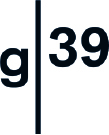The Independents
4 September - 9 October 2004

In ‘2001 Wales: Unauthorised Versions’, an exhibition of work by artists from Wales, was put together by curator Alex Farquharson for the newly converted exhibition space at the HDLU building in Zagreb, Croatia. In 2004, g39 was invited to select artists from Croatia for a reciprocal exhibition to take place in g39, Cardiff.
From an outsider’s point of view, the art scene in Croatia is comparable to that in Wales. There are numerous contemporary artists producing work with universally relevant themes and / or concerns and others producing work that is based in social or political commentary that is peculiar to the region. The market for art is meagre, and the wider public have little interest in achievements in contemporary art, forcing most artists to find their own methods of survival. The artists we selected for this exhibition make work that is unambiguously rooted in the contemporary Slavic situation, but which could equally be a commentary of our own country.
Igor Grubic’s work has specific political activism at its heart, from one-day protests against a national tax imposed on books to re-workings of infamous political stunts played out in the 1960s. For Velvet Underground Grubic invited inmates of Lepoglava Prison to participate in this work. Grubic has been photographed in their cells wearing animal costumes. The portraits are accompanied by texts detailing prisoners’ age, the crime they were found guilty of, and a synopsis of their childhood fantasy or dream. The project is intended to comment on the inherent tensions between the individual’s drive and the ethical constitution of society.
Ivan Faktor is one of a number of artists to produce counter-narratives to the official war history during the 1990s. He combines documentary photographs, video and sculpture with feature films, in particular those of Fritz Lang. Paying homage to Lang, Faktor draws on the private archive of his war video diary, recorded in his home town Osijek in 1991-92, to produce Das Lied Ist Aus, a hypnotic war documentary about his country. It has several parallels with Lang’s film M. The synopses are related, the latter concerning a murderous sociopath on the run from the Berlin underworld, and the former bears a less narrative witness to a city under siege filled with grief, absurdity and violence.
Ana Seric’s Cross Tree (a collaborative piece with Ana Husman) came about when the two artists’ identities were accidentally switched on Croatian national television. Ana Seric’s name and work were presented with a portrait of Ana Husman. After that occasion they began thinking about the possibility of this exchange of identity really happening. They started questioning terms of identity of the individual and its meaning on a global level. The question they wanted to ask was what is it that determines who we are? Is it our name, place of birth, things that happened to us during our lifetime? And how easily can these identities be modified? Drawing on their family albums and histories, they produced a new history of their family which is part-truth, part-fiction. They even found a link that connected one to the other, and concluded that they are in fact related.
Kristina Leko is a widely respected Croatian artist, having exhibited nationally and internationally. She works mainly with video and photography, which she uses essentially to document her engagements with social patterns and commerce, and to comment on Croatian identity. On Milk and People deals with the social and political situation in Croatia and Hungary. This documentary project was realised in collaboration with ten farmer families, five from Croatia and five from Hungary. It explores everyday life and the social situations of several small farms in the two countries, giving an insight into people’s lives being changed by the country’s transition from socialism to capitalism, and the process of European unification. All the families involved in the project make their income through dairy production. A short documentary video shows a day in the life of each family from early morning till evening, the two daily occasions when the cows are milked. Interviews with the family members recount their social, financial and sometimes personal situation.
Andreja Kuluncic’s work operates as a kind of social laboratory, involving research materials, surveys, polls and interviews, panel discussions, scientific lectures, workshops, newsletters, interactive web-based games and video and audio recordings. She has worked in collaboration with sociologists, biologists and other experts on recent projects. For one project she worked with employees from NAMA, a chain of department stores that was particularly successful in Croatia under the Socialist regime. NAMA comes from NArodni MAgazin, which means ‘The People’s Shop’. Condemned to bankruptcy by the country’s economic development, these shops have practically ceased all activity in the last few years, but are kept open by the employees who occupy them. On ten advertising hoardings in central Zagreb, Kuluncic pasted a portrait of an employee with the title NAMA - 1908 Employees, 15 Department Stores. Based on the resources, values and places of the advertisement, a public debate was started concerning the economic transition of Croatia. The employee on the poster symbolises the individual and collective disasters that accompany the changes in the Croatian economy.
g39 wishes to thank The Ministry of Culture and the artist community, in particular Marijana Mance and Leila Topic, whose invaluable support enabled us to meet many artists, visit several galleries and studios, and view a number of showreels and documentation.
- The following Artists were in this show:
- Ana Seric and Ana Husman
- Ivan Faktor
- Igor Grubic
- Kristina Leko
- Andreja Kuluncic












